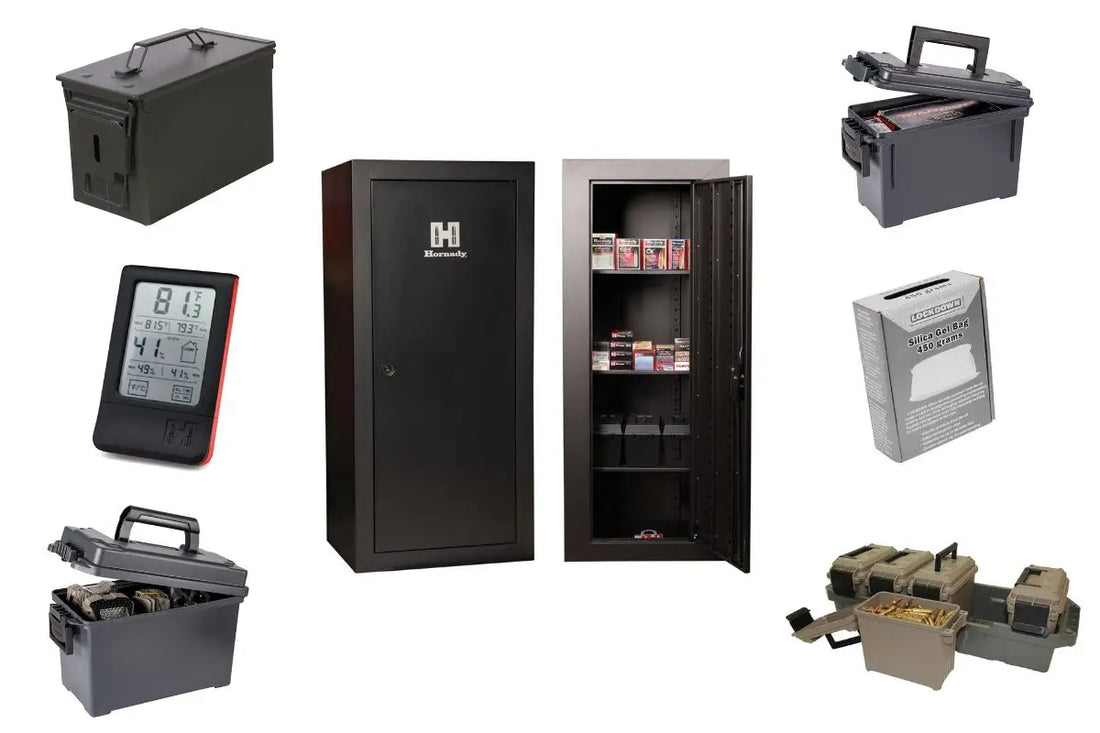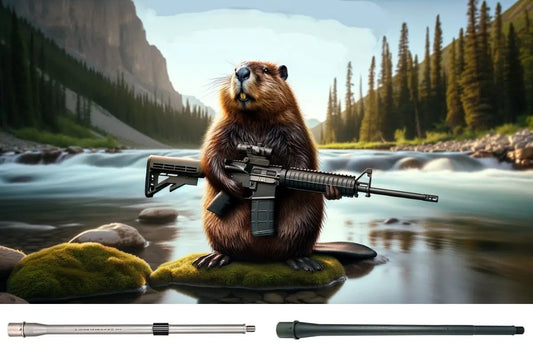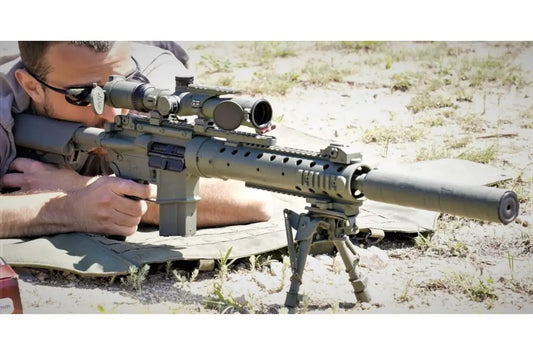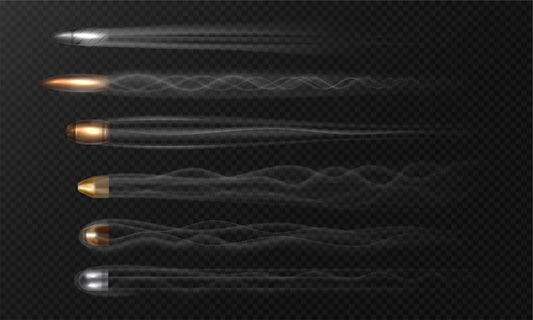
Locked-Down & Ready: The Expert’s Guide to Ammo Cans, Boxes & Lockers (That Actually Protect Your Investment)
TL;DR for Skimmers
Store ammo cool, dry, and organized. Use gasketed cans or O-ring field boxes for bulk, flip-top component boxes for reloads, and a dedicated ammo cabinet for volume. Add silica gel or a dehumidifier rod and verify RH with a hygrometer (target ~35–50% RH, steady temps). Label by caliber/lot/date. For safe, high-capacity storage, the Hornady Ammo Cabinet is a standout.
Quick-Compare Summary
|
Storage Type |
Best For |
Key Advantages |
Watch-Outs |
Standout Picks |
|
Steel Ammo Cans |
Long-term bulk storage; rough handling |
Airtight gasket, durable, stackable |
Heavy; can rust if neglected |
Allen Steel .50 Cal Can |
|
Polymer Field Boxes |
Affordable, frequent range runs |
Light, lockable, budget-friendly |
Not as fire-resistant; latches vary by brand |
Plano Field/Ammo Box Small, Plano Field/Ammo Box Medium (50-cal size) |
|
Clustered Ammo Crates |
Multi-caliber organization; transport |
O-ring cans in a stackable crate; tie-downs |
Takes more shelf space than a single can |
MTM 3-Can Ammo Crate, MTM 5-Can Mini Crate |
|
Component Boxes (Flip-Top) |
Reloaders; caliber-specific storage |
Labeled cells; consistent orientation |
Plastic can crack in deep cold |
MTM 50-Round Flip-Top (38/357) |
|
Ammo Cabinets/Lockers |
High-capacity, lockable home base |
Shelved capacity; keeps ammo separate from guns |
Not fire safes; still control humidity |
Hornady Ammo Cabinet |
|
Moisture Control Add-Ons |
Any container/cabinet |
Extends ammo life; fights corrosion |
Needs monitoring/regeneration/power |
Lockdown Silica Can 750g, Dehumidifier Rod, Compact Dehumidifier, Wireless Hygrometer |
Why Ammo Storage Matters (Beyond Neat Shelves)
Ammunition is robust but not invincible. Heat, humidity, solvents, and physical abuse are the big enemies. As SAAMI puts it, “Ammunition should be stored in a cool, dry location away from solvents and other chemicals, heat sources, or open flames.” That’s not just safety boilerplate; it’s the difference between consistent ignition and a hangfire you didn’t plan on.
Practical implications for the serious shooter:
- Consistency = accuracy. Stable storage reduces velocity spreads and point-of-impact shifts.
- Corrosion is quiet failure. Brass and steel components don’t advertise oxidation until it becomes obvious—by then, it’s late.
- Safety & separation. Keeping ammo separate from firearms helps reduce unauthorized use risks and makes home organization more deliberate.
Steel Ammo Cans: The Classic That Still Wins
Use when: You want maximum durability, a true gasketed seal, and a container that shrugs off hard use.
- Why they work: Steel cans (e.g., .50-cal pattern) offer compressive strength and rubber-gasket lids to keep moisture out and pressure equalized.
- Pro move: Drop in a 750g silica gel can and a humidity card; crack the lid as little as possible.
Recommended:
- Allen Steel .50 Cal Ammo Can — lockable, gasket-sealed, stackable; classic form factor.
Pros
- Real gasket seal; handles stacking/weight well.
- Lockable hasp for basic access control.
- Long service life; dents beat cracks.
Cons
- Heavier than polymer; can rust if finish gets compromised.
- Not insulated; temperature tracks ambient (so don’t store in a hot garage).
Expert POV: SAAMI also notes it’s not advisable to leave ammunition inside a vehicle—heat cycles and chemical exposure are the issue, not “magic can failures.” Keep your steel cans indoors, stable temp. – SAAMI.org
Polymer Field/Ammo Boxes: Light, Lockable, Budget-Smart
Use when: You’re moving ammo frequently to the range or field and want lightweight and stackable storage with decent sealing.
Recommended:
- Plano Field/Ammo Box Small — compact, lockable latch, stout handle.
- Plano Field/Ammo Box Medium — sized for .50-cal capacity; great utility size.
- MTM AC30T Ammo Can (30-cal size) — designed to hold ~15 lbs; good for boxed pistol or loose .223/5.56.
Pros
- Lightweight, easy to carry; O-ring lidded options exist.
- Usually lockable; stackable footprints keep shelves tidy.
- Value: durable enough for most users.
Cons
- Less heat tolerant than steel; plastics can become brittle in deep cold if mishandled.
- Not fire-rated; sealing varies by brand.
Industry perspective: As one NRA Family writer notes, silica packs are a smart add to any box; plastics can crack in colder temperatures—just be deliberate when handling in winter. –NRA Family
Ammo Crates: Multi-Caliber Organization That Stacks and Straps
Use when: You want modular organization with multiple cans, ATV tie-downs, and an easy grab-and-go system for training classes or hunting camps.
Recommended:
- MTM 3-Can Ammo Crate — three O-ring .50-cal cans docked in a rugged crate.
- MTM 5-Can Mini Crate — five AC15 minis for small-lot organization.
Pros
- O-ring sealed cans + crate = sealed micro-storage inside macro-storage.
- Tie-down points and stacking make transport clean and repeatable.
Cons
- Consumes more cubic footage than a single can on a shelf.
- If you open the crate often, monitor humidity more closely (air exchange).
Component Boxes for Reloaders: Flip-Top Discipline
Use when: You reload and demand lot tracking and neck-up/primer-down orientation for consistent ballistic performance.
Recommended:
- MTM 50-Round Flip-Top (38/357) — labels, molded caliber callouts, 25-year hinge guarantee.
Pros
- Per-round organization improves QC, inventory, and match prep.
- Labels/lot/date at a glance; stackable trays.
Cons
- Plastic can crack if abused in sub-freezing temps; be gentle.
Tip: Keep these inside a sealed can or crate with desiccant for long-term; use the flip-tops for short-term handling, load dev, and match day.
Ammo Cabinets & Lockers: The High-Capacity Home Base
Use when: You’ve outgrown cans and want one lockable, organized footprint—separate from your gun safe.
Recommended:
- Hornady Ammo Cabinet — 55" x 21" x 16", ~87 lb cabinet with three 75-lb-rated shelves. A purpose-built ammo locker (not a gun safe), perfect for boxed cases, cans, and components.
Pros
- Serious capacity, shelving, and locking without gun-safe prices.
- Encourages separation of ammo and firearms, a best practice for many households.
- Clean integration with hygrometers and dehumidifiers.
Cons
- Not a fire safe; add external mitigation if that’s a requirement.
- Still subject to ambient humidity—plan moisture control.
Moisture Control: The Unsexy Upgrade That Pays Off
Goal: Keep relative humidity stable and moderate. In practice, experienced shooters aim for ~35–50% RH with minimal temperature swings (a practical, industry-accepted range for corrosion control and powder stability). Pair desiccant with active dehumidification for cabinets/safes, and verify with a hygrometer.
Add these:
- Lockdown Silica Gel Can – 750g — rechargeable indicator crystals. Great inside cans and cabinets.
- Lockdown Safe Dehumidifier Rod — warms the air to eliminate moisture in a safe/cabinet (12" model dries ~100 cu ft). Mount horizontally near the floor.
- Lockdown Gunsaver 18" Dehumidifier — similar concept; protects ~200 cu ft.
- Lockdown Compact Automatic Dehumidifier — thermo-electric, set a humidity threshold, drain via tank or hose. Ideal for vault rooms/closets.
- Hygrometers: Lockdown Wireless Digital Hygrometer or Hornady Wireless Hygrometer to monitor RH/temperature without opening the cabinet.
Industry guidance: SAAMI emphasizes cool, dry storage and keeping ammunition away from heat sources or open flames. Quote it and live by it.
Setup: The 10-Minute Ammo Storage Playbook
- Choose your container by use case:
- Bulk & bunker: Steel .50-cal can + silica.
- Range day: Polymer field box (small/medium) + label tape.
- Reloading: Flip-top boxes inside a sealed can or crate.
- Volume: Hornady cabinet as the central depot.
Product Picks (That Punch Above Their Price)
Best Steel Can (General Purpose)
- Allen Steel .50 Cal Ammo Can — classic dimensions, gasket lid, lockable, stackable. Add a 750g Lockdown silica can and call it done.
Best Polymer Range Hauler
- Plano Field/Ammo Box Small — compact, sturdy handle, budget-smart.
- Plano Field/Ammo Box Medium — .50-cal capacity without the weight of steel.
Best Modular System
- MTM 3-Can Ammo Crate Combo — three O-ring .50-cal cans in a stackable crate; tie-downs for UTV/ATV.
- MTM 5-Can Mini Crate — perfect for sorting by caliber or load type.
Best Reloader’s Box
- MTM 50-Round Flip-Top (38/357) — 25-year hinge, molded caliber callouts, stackable. Keep these inside a sealed can with silica for long-term.
Best High-Capacity Locker
- Hornady Ammo Cabinet — 3 shelves rated 75 lb each, 87 lb cabinet; the right footprint for real ammo inventories. Add a rod + wireless hygrometer for set-and-forget.
Best Moisture Control Bundle
- Lockdown Silica Gel Can 750g + Dehumidifier Rod + Wireless Hygrometer. Optional upgrade: Compact Automatic Dehumidifier for closets/vault rooms.
Smart Practices That Separate Pros from Piles
- Lot management: Keep factory lot numbers or reload batch IDs together. If a performance issue crops up, you can isolate it instantly.
- Rotation: FIFO your training ammo; date labels on boxes/cans.
- Inspection: On opening a can, glance at indicator cards and pull a spot check—look for corrosion, pushed primers, damaged necks.
- Thermal sanity: Avoid thermal cycling; SAAMI’s “cool, dry” wisdom beats any mythical “garage cure.” Don’t store ammo in vehicles.
- Humidity verification: Trust hygrometers, not vibes. Wireless units let you check without opening your storage (less air exchange).
What the Experts Say
- SAAMI (the industry’s standards body): “Ammunition should be stored in a cool, dry location away from solvents and other chemicals, heat sources, or open flames.” This is the baseline, full stop.
- NRA Family on day-to-day storage: “A trick I use…is putting a silica pack in each box to keep humidity down,” with the reminder that plastic can crack in colder temps. That’s your cue to be careful with polymer in the dead of winter.
Steel vs. Polymer vs. Lockers — Our Take
If you’re serious about ammo—cases of 9mm, 5.56, .308, 12-gauge—build a two-tier system:
- Primary containers: Steel .50-cal cans (Allen or mil-spec equivalents) for true long-term sealing, each with a big silica can.
- A central hub: a Hornady Ammo Cabinet with a dehumidifier rod at the base and wireless hygrometer. This keeps your inventory organized by shelf, locked, and humidity-stable, while the cans inside stay sealed until needed.
Why not “just a gun safe”? Because ammo eats volume fast, and mixing guns + ammo in the same box is a workflow mess. The locker + cans strategy gives you capacity, control, and speed—with better maintenance discipline.
Where polymer shines: Range days and class logistics. Plano/MTM boxes are lighter, tossable, and easy to label per event. Keep your precision rifle ammo in flip-tops, but store those boxes inside a sealed can for long rests.
Common Mistakes (And Fast Fixes)
-
Mistake: Storing ammo in a garage with large temp/humidity swings.
Fix: Bring it inside; if you must use a garage, insulate, add a dehumidifier, and verify with a wireless hygrometer (door closed). -
Mistake: “Dry enough” guessing.
Fix: Use a hygrometer and indicator cards. Recharge/replace desiccant on a schedule. -
Mistake: Mixing solvents and ammo on the same shelf.
Fix: Different cabinets. SAAMI warns to keep ammo away from solvents and open flames. -
Mistake: Stacking unlabeled boxes.
Fix: Label the ends and lids; note lot/date. Your future self will thank you.
Pros & Cons by Category
Steel Ammo Cans
- Pros: Max durability, real seal, stackable, lockable.
- Cons: Heavier; surface rust risk; no fire insulation.
Polymer Field Boxes & Crates
- Pros: Lightweight, lockable options, O-ring lids, affordable; modular crates with tie-downs.
- Cons: Brittle in extreme cold; sealing varies; not fire-rated.
Flip-Top Component Boxes
- Pros: Round-by-round QC, labels, stackable.
- Cons: Plastic hinges need sane temps; always pair with a sealed container for long-term.
Ammo Lockers/Cabinets
- Pros: Capacity, shelving, simple locking, tidy workflow.
- Cons: Not fire safes; requires add-on humidity control.
Moisture Control
- Pros: Extends ammo life, prevents corrosion, improves consistency.
- Cons: Needs oversight (recharge silica, power for rods/units).
FAQs
Q: What RH is “good” for ammo?
A: Keep it stable—~35–50% RH is a practical range for corrosion mitigation and primer/powder stability. Use silica/desiccant in sealed cans and active dehumidification in cabinets/closets. Verify with a hygrometer. (Rule-of-thumb from industry practice; pair with SAAMI’s “cool, dry” guidance.)
Q: Can I store ammo in a gun safe?
A: You can, but ammo eats space and safes need constant humidity control. Many shooters prefer a dedicated ammo locker + moisture control and save the safe for firearms.
Q: Is a garage okay?
A: Only if insulated and humidity-controlled. Avoid thermal cycling. A compact dehumidifier and wireless hygrometer make it workable; a hot, unconditioned garage is a no.
Q: Do I need to keep ammo in original boxes?
A: For factory ammo, yes—at least keep the lot data. For bulk, use labeled can cards or flip-tops with load notes.
Q: Are cabinets fire-rated?
A: Ammo lockers typically aren’t fire safes. If fire protection matters, look at rated cabinets/safes and still control humidity.
Final Checklist
- Pick storage type(s): Steel can | Polymer box | Crate | Cabinet
- Add silica to cans; add rod/compact dehumidifier to cabinet/closet
- Install wireless hygrometer, set alert thresholds
- Label caliber • lot • date • count
- Shelve with heaviest low; maintain clearance for airflow
- Keep away from solvents/chemicals/heat sources; don’t store in vehicles




